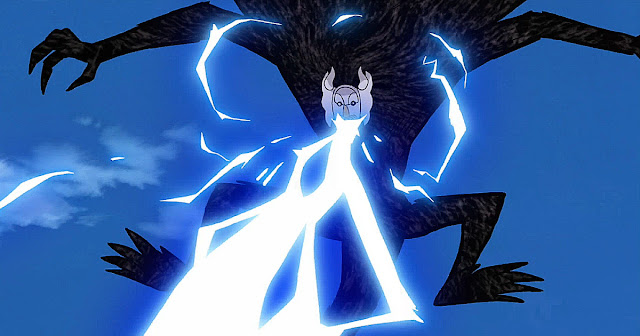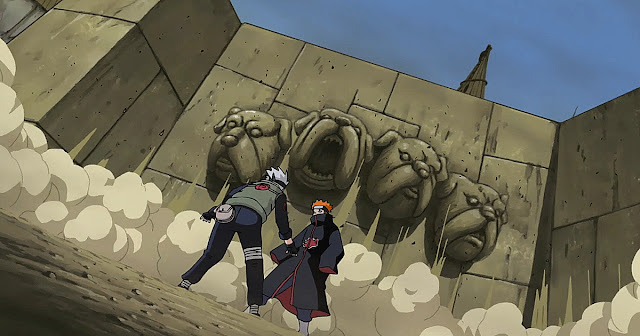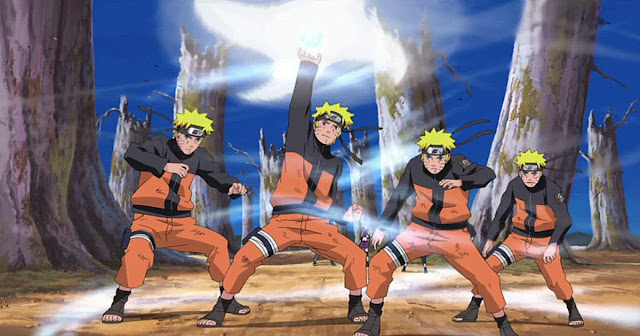Special
What are the A-rank jutsu in Naruto?
In the Naruto series, jutsu are categorized into different ranks based on their complexity, power, and difficulty to perform. A-rank jutsu is considered highly advanced and requires significant skill and chakra control to execute. Here are some notable A-rank jutsu from the Naruto series:
Rasengan: Created by Minato Namikaze and later perfected by Naruto Uzumaki, the Rasengan is a powerful and concentrated spinning ball of chakra that causes immense damage upon impact.
Chidori (Raikiri): Invented by Kakashi Hatake, the Chidori (also known as Raikiri) is a high-speed lightning jutsu that creates a blade of electrical energy. It’s used for swift and deadly attacks.
Kirin: Sasuke Uchiha’s Kirin is a natural lightning technique that utilizes a thundercloud to create a powerful and devastating lightning strike on the target.
Asuma’s Flying Swallow: Asuma Sarutobi’s technique involves imbuing his trench knives with chakra, enhancing their cutting power and allowing him to attack from unexpected angles.
Raiton: Gian (Lightning Release: False Darkness): This jutsu, used by Kakashi, releases a powerful electrical surge into the ground, creating a network of electric currents that can immobilize and damage opponents.
Earth Release: Earth-Style Wall: A defensive jutsu that creates a sturdy wall of earth to block attacks or shield allies.
Fire Release: Great Fireball Technique: This jutsu produces a massive fireball that can incinerate targets. It was one of the signature moves of the Uchiha clan.
Water Release: Water Dragon Bullet Technique: This jutsu creates a powerful water dragon that engulfs and attacks the opponent.
Wind Release: Rasenshuriken: Naruto’s Wind Release variation of the Rasengan, which infuses the technique with wind nature chakra, creating a swirling blade of wind that damages at a cellular level.
Shadow Imitation Shuriken Technique: Shikamaru Nara’s jutsu allows him to control Shuriken mid-flight using his shadow manipulation abilities.
These are just a few examples of A-rank jutsu in the Naruto series. A-rank jutsu is typically a versatile and formidable technique that plays significant roles in battles and character development throughout the series.
Special
Kaiju No. 8: Arcs Ranked

“Kaiju No. 8” has quickly risen in popularity due to its thrilling storylines, compelling characters, and stunning artwork. In this article, we’ll rank and discuss the major arcs of “Kaiju No. 8,” analyzing their impact on the series and their significance to the overall narrative.
Overview of Kaiju No. 8
”Kaiju No. 8” also called “Monster #8” is a Japanese manga series created and drawn by Naoya Matsumoto. Kafka Hibino is a high school student who turns into a mighty kaiju and becomes a member of the Defense Force to fight evil creatures. In the series, the action-comedy-drama is portrayed resulting in an interesting series.
Arc Rankings
- Kaiju No. 9 Confrontation Arc
- Third Division Invasion Arc
- Kaiju No. 10 Assault Arc
- Early Days Arc
- Monster Sweepers Arc
Factors for Ranking
Our rankings are based on several factors:
- Storyline Progression: How well the arc advances the main plot.
- Character Development: Growth and development of key characters.
- Action and Excitement: Quality and intensity of battles and action scenes.
- Emotional Impact: The arc’s ability to evoke emotions and connect with the audience.
Detailed Arc Analysis
Early Days Arc
Summary: The “Early Days Arc” explains Kafka Hibino, his acquisition of the Kaiju No. 8 ability, and his choice of becoming a Defense Force member. A new foundation to the series is thus created and the main character and their goals introduced.
Analysis: The first arc here is very strong in terms of both world, or universe, building, as well as a good set-up for the protagonist’s schism. While it is mostly informative, it engages readers enough with Kafka’s rather peculiar predicament and the introductory fight scenes.
Rank Reasoning: The “Early Days Arc ” is lower because, while it adds to the plot’s development, it is more of an introduction than the truly exciting and dangerous moments or a few shocking plot twists. Nevertheless, its usage is pertinent when creating the setting of the story.
Monster Sweepers Arc
Summary: In the Monster Sweepers Arc, Kafka and his friends still maintain their duty of cleaning up monsters although they also have other issues particularly about Kafka becoming a kaiju. They are more focused on probing into the lives which the characters lead every day and difficulties they encounter.
Analysis: It serves to show the audience more of the foreground from the characters’ day-to-day lives. Nonetheless, it presents humor and comedic moments, but at the same time points at the threats that they undergo.
Rank Reasoning: Despite this, this arc is not very dark, it does not contain as much action or as important story advancement as the latter arcs do. This is still a segment that builds good character, but it is not as powerful.
Takachiho’s Kaiju No. 9 Confrontation Arc
Summary: Kafka and the Defense Force engage in a battle against Kaiju No. 9 regarded as a very smart and lethal Kaiju. This arc focuses on both the tactical and psychological processes of fighting an opponent who is strong and capable.
Analysis: This arc is my favorite in the series due to described strategy both at macro and micro levels of the battle and strong characters’ feelings. Kaiju No. 9 is a very fleshed out villain to the heroes, and forces them or Kafka to meet the destruction head on.
Rank Reasoning: Thus, the “Kaiju No. 9 Confrontation Arc” takes pole position owing to its features of good action, strategy, and excellent character portrayal. It greatly develops the story and contains some of the show’s best scenes.
Azukai No. 10 Assault Arc
Summary: Suddenly, Kaiju No. 10 attacks the headquarters of the Defense Force to escalate the battle and expand on Kafka’s and the Defense Force’s combat performances.
Analysis: It is full of even more actions and the character’s development than the first arc. It also creates some new complications and antagonists that help to renew the story and to interest the reader.
Rank Reasoning: For its intense and non-stop action and for being topped of with the introduction of new elements that make the story even more complicated, the “Kaiju No. 10 Assault Arc” is highly rated. In fact, it comes as very, very close to being the best arc to the series, just after the Kaiju No. 9 arc.
Conclusion
Thus, the series of arcs in “Kaiju No. 8” provides for the uniting of the many fragments that make up for the narrative. Therefore, from creating the preliminaries of the world that is depicted to the exceptional battles that take place the series manages to maintain the readers’ interest not only with the originality of plot but also by the vivid characters. Numbering the arcs gives an opportunity to analyze series’ build-up and the extent of investment of feelings that different arcs demand.
FAQs
Q: What makes the “Kaiju No. 9 Confrontation Arc” the best arc?
A: This arc combines strategic battles, emotional depth, and significant plot advancement, making it the most compelling and impactful part of the series.
Q: Are there any filler arcs in “Kaiju No. 8”?
A: No, “Kaiju No. 8” is known for its tight and focused storytelling, with each arc contributing meaningfully to the overall plot.
Q: Will there be more arcs in the future?
A: Yes, as the series is ongoing, readers can expect more exciting arcs and developments in the future.
Q: Is the manga different from the anime adaptation?
A: As of now, the manga serves as the primary source material. Any differences between manga and potential anime adaptations will depend on how the story is translated into the animated format.
Special
Kaiju No. 8 Captured Arc

The Kaiju No. 8 Captured Arc, the fourth story arc in the Kaiju No. 8 series, is a key moment that deepens the narrative and explores the characters’ complexities. This arc follows Kafka Hibino as he grapples with his newfound kaiju powers and the following repercussions. This comprehensive article delves into the key events, character developments, and thematic elements that define this arc.
Key Events and Plot Developments In Kaiju No. 8 Captured Arc
Kafka Hibino’s Capture and Imprisonment
After the revelation of his kaiju abilities, Kafka Hibino is apprehended by the Defense Force and taken to the Ariake Maritime Base. This marks a significant turning point in the series, as Kafka’s dual identity becomes a central conflict.
The Implications of Kafka’s Powers
Kafka’s transformation into a kaiju presents a unique challenge for the Defense Force. His ability to shift between human and kaiju forms raises questions about his allegiance and the potential threat he poses. The capture and subsequent handling of Kafka highlight the tension between his human and kaiju identities.
Defense Force Reorganization
In the aftermath of the near-destruction of the Tachikawa Base, key members of the Defense Force are reassigned. Kikoru Shinomiya, Aoi Kaguragi, Iharu Furuhashi, Leno Ichikawa, and Haruichi Izumo are deployed to different divisions. This reorganization signifies a strategic shift in response to the growing kaiju threat.
Kafka’s Confrontation with Director General Isao Shinomiya
Director General Isao Shinomiya plays a crucial role in determining Kafka’s fate. Upon meeting Kafka, Isao confronts him and collects a blood sample to understand the extent of his powers. This encounter leads to a dramatic battle where Kafka loses control and the kaiju within him resurfaces.
Kafka’s Internal Struggle
During the confrontation, Kafka struggles to maintain control over his kaiju form. His desperation to avoid harming Isao, and by extension Kikoru, results in a remarkable feat of self-control where he forces his body to punch himself and revert to human form. This moment underscores Kafka’s humanity and his determination to protect those he cares about.
The Decision to Utilize Kafka as a Weapon
Despite the risks, Isao decides to keep Kafka alive and utilize his unique abilities as a weapon against other kaiju. This decision is met with resistance from other high-ranking Defense Force members, highlighting the ethical and strategic dilemmas faced by the organization.
Kafka’s Path to Proving His Worth
Isao informs Kafka of his decision and sets a condition: Kafka must prove his worth to survive. This challenge sets the stage for Kafka’s ongoing struggle to balance his kaiju powers with his desire to protect humanity.
The Emergence of Kaiju No. 9
As the arc progresses, Kaiju No. 9 undergoes a significant transformation, molting and preparing for another attack. This development foreshadows future conflicts and raises the stakes for Kafka and the Defense Force.
Kikoru Shinomiya’s Transfer to the First Division
Kikoru is transferred to the First Division, where she encounters Vice-Captain Eiji Hasegawa and Captain Gen Narumi. Her exposure to the First Division’s formidable power further develops her character and her role in the ongoing battle against the kaiju.
New Characters Introduced In Kaiju No. 8 Captured Arc
Keiji Itami
Keiji Itami is a new addition to the series, bringing fresh dynamics and potential conflicts. His role and motivations remain to be explored in future arcs.
Kaiju No. 2 and Kaiju No. 6 In Kaiju No. 8 Captured Arc
These newly introduced kaiju add layers of complexity to the series’ monster lore. Their abilities and backstories will likely be crucial to the unfolding narrative.
Conclusion
The Kaiju No. 8 Captured Arc is a rich, multifaceted chapter in the series, marked by intense character development, strategic shifts, and high-stakes battles. As Kafka Hibino navigates the challenges of his dual identity, the Defense Force must adapt to an evolving kaiju threat. This arc sets the stage for future conflicts and character arcs, promising an exciting continuation of the Kaiju No. 8 story.
Special
Why Did Muzan Kill Tanjiro’s Family?
.png)
Why did Muzan kill Tanjiro’s family In Demon Slayer
In the world of “Demon Slayer: Kimetsu no Yaiba,” one of the most heartbreaking and pivotal moments is the massacre of Kamado’s family by the demon Muzan Kibutsuji. This tragic event sets the stage for Tanjiro’s journey as a demon slayer, driven by a desire for vengeance and a commitment to protect humanity from the horrors of demons. But why did Muzan target Tanjiro’s family? To understand this, we need to delve into Muzan’s character, his motivations, and the overarching narrative of the series.
Muzan Kibutsuji: The First Demon
Muzan Kibutsuji is the first demon and the progenitor of all other demons in the “Demon Slayer” universe. Born during Japan’s Heian period, Muzan’s transformation into a demon was a result of an experimental treatment to cure his terminal illness. While the treatment saved his life, it also turned him into a monster with an insatiable hunger for human flesh and blood.
Muzan’s primary goal throughout the series is to overcome his one weakness: sunlight. Exposure to sunlight is fatal to demons, and Muzan’s ultimate aim is to find a way to become immune to it, thus achieving true immortality. This quest for invincibility drives many of his actions, including his pursuit of the “Blue Spider Lily,” a mythical flower believed to hold the key to his immunity.
The Massacre of the Kamado Family
The massacre of the Kamado family is a horrific event that takes place at the beginning of the series. Tanjiro, the eldest son, returns home one day to find his entire family slaughtered, with only his sister Nezuko surviving, albeit transformed into a demon. The brutality of the attack is staggering, and it serves as the catalyst for Tanjiro’s transformation from a kind-hearted boy into a determined demon slayer.
Muzan’s Motivation: A Theoretical Perspective For Killing Tanjiro’s family
While the series does not explicitly detail Muzan’s exact motivation for targeting the Kamado family, there are several theories that can be pieced together from the narrative and Muzan’s character:
-
Random Attack: One possibility is that the attack was entirely random. Muzan, being a demon of unparalleled cruelty, often targets humans without specific reasons. His need for sustenance and his desire to create more demons might have driven him to attack the Kamado family. This theory aligns with Muzan’s unpredictable and chaotic nature, as he does not require a significant reason to commit acts of violence.
-
Potential Threat: Another theory suggests that Muzan might have sensed a potential threat in the Kamado family. This idea stems from the fact that Tanjiro, despite being human, possesses extraordinary potential and a strong sense of justice. Muzan, with his keen instincts, might have perceived this latent strength and sought to eliminate any future threat to his dominion. This theory also gains some traction when considering the demon-slaying lineage that is revealed later in the series.
-
Experimentation: Muzan’s quest for a demon immune to sunlight could also play a role. By transforming Nezuko into a demon, he might have been experimenting with creating demons who could potentially withstand sunlight. Nezuko’s unique abilities and her eventual resistance to sunlight support this theory. Muzan’s scientific curiosity and his constant search for ways to enhance his own powers might have led him to target families with latent potential, hoping to create the perfect demon.
The Impact on Tanjiro
The slaughter of his family profoundly impacts Tanjiro. He is thrust into a world of darkness and violence, forced to take up the sword to protect the innocent and seek vengeance for his loved ones. Tanjiro’s journey is marked by his unwavering determination, compassion, and a strong sense of duty. Despite the overwhelming odds, he remains committed to finding a cure for Nezuko and putting an end to Muzan’s reign of terror.
Tanjiro’s empathy and kindness set him apart from many other protagonists in similar narratives. Instead of being consumed by hatred, he strives to understand the demons he faces, often showing them compassion in their final moments. This unique approach not only highlights his character’s depth but also underscores the series’ themes of redemption and the human capacity for understanding and forgiveness.
Conclusion
The massacre of the Kamado family by Muzan Kibutsuji is a critical moment in “Demon Slayer: Kimetsu no Yaiba,” setting the stage for the entire series. While Muzan’s exact motivations remain shrouded in mystery, various theories offer insights into his potential reasons for targeting Tanjiro’s family. Whether driven by a random act of violence, a perceived threat, or an experiment in his quest for invincibility, Muzan’s actions have a lasting impact on Tanjiro and the narrative as a whole.
Ultimately, the tragedy serves as a powerful catalyst for Tanjiro’s growth and development as a character, propelling him on a journey of vengeance, protection, and, ultimately, hope. Through his trials and tribulations, Tanjiro exemplifies the resilience of the human spirit and the enduring power of compassion and justice.


.jpg)








.png)
.png)
.png)
.png)